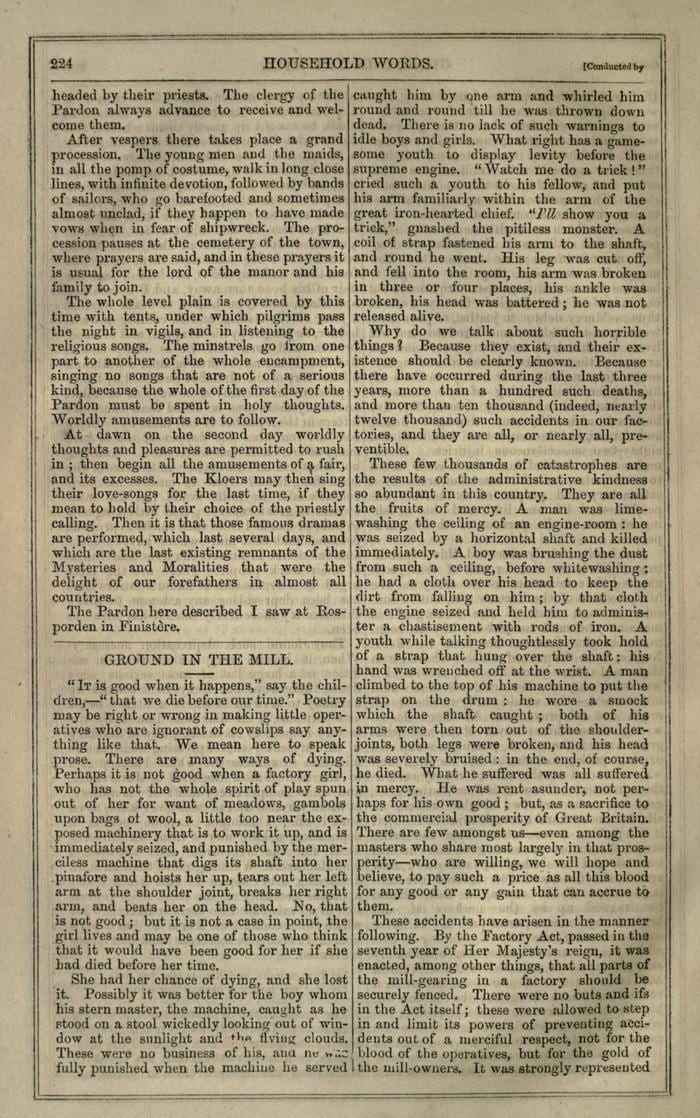
VII: “May the Children Weep Before You”: The Echoing Cry
Working children in the United States faced similar conditions to those Elizabeth Barrett Browning (EBB) describes in her poem about child labor. In particular, today’s McLennan County was a hotspot for child occupations in the early 1900’s, such as the image of a newsboy seen above (photo courtesy of Louise Hine, Library of Congress) and the girl below.

A twelve-year-old girl pictured near the spooling machine she operates in West, TX. Photo from the Library of Congress, National Child Labor Committee Collection.
However, at this point child labor was no new concern. American writers began engaging with EBB’s Cry soon after its publication. Shown below, The Christian Inquirer (1847) uses EBB’s poem to make an emotional appeal about child labor in the United States. This article and others like it expressed the public sentiment that enabled this lengthy movement towards reform.

“A Century of Christian Poems. XXXI. The Cry of the Children,” Christian Inquirer (1846-1864), vol 1, iss 12, (Jan 2, 1847): 48
This image originally appeared as part of ProQuest’s American Periodicals Series product. Reprinted with permission from digital images produced by ProQuest LLC.
Part of the U.S. conversation seen in The Christian Inquirer parallels treatment of child labor in Charles Dickens’s Household Words. The article Ground in the Mill uses quotes from EBB’s emotional appeal to further the author’s own claims. Like U.S. reform, the ten-year gap between this article and EBB’s works shows the slow movement away from child labor in England.
Literature in the U.S. and England played a pivotal role in child labor reform. EBB’s The Cry of the Children came off the heels of Parliament’s report on child labor (refer to this related blog post), not only starting a conversation, but creating a lasting impression. EBB’s work led by example as the voice of reform from London all the way to individual readers across the U.S., maybe even in Waco, TX.
Can we hear The Cry of the Children in our own world today? Click here to learn about child labor and slavery in our own time.
Thank you for exploring this exhibition, and click here to take a short survey!
Post created by Emily Burton-Wood
